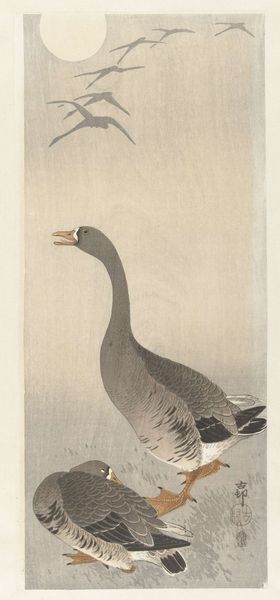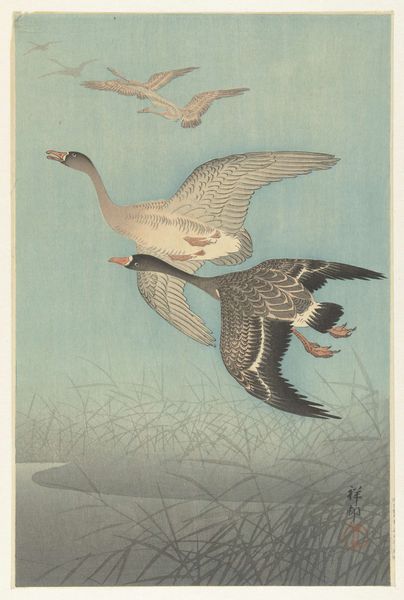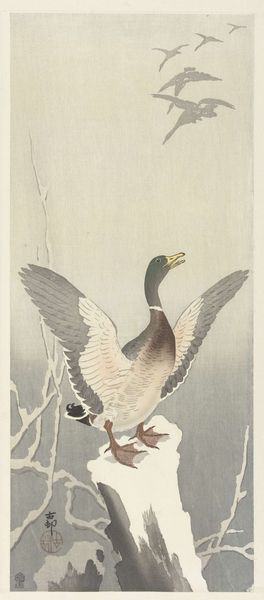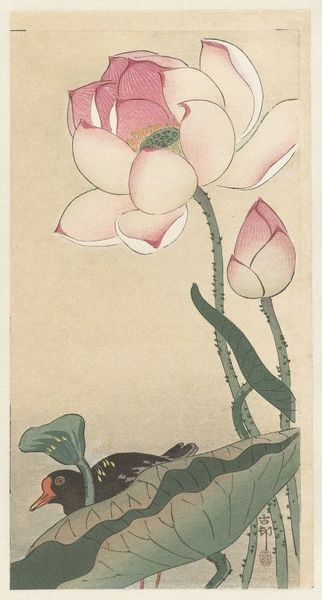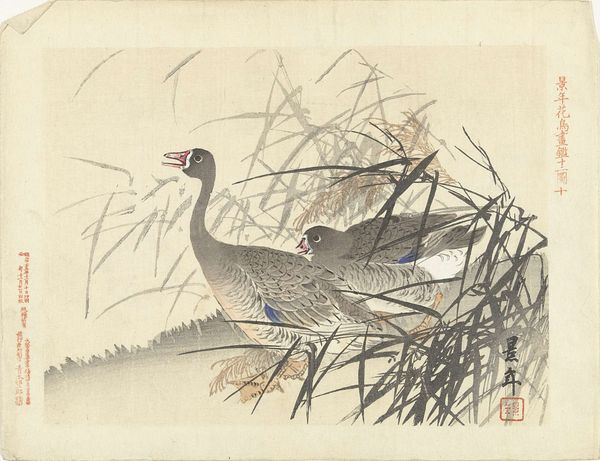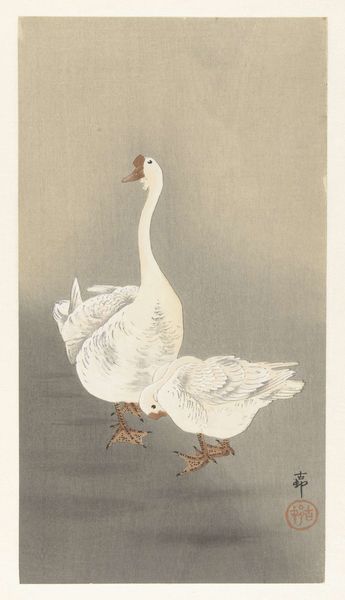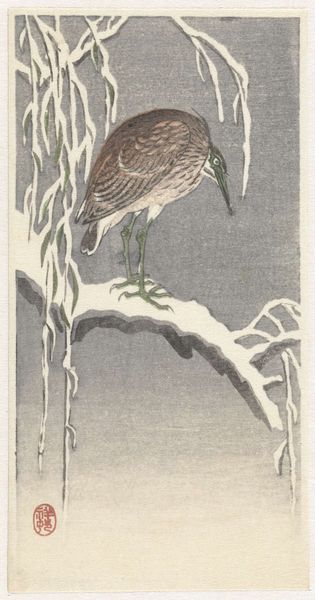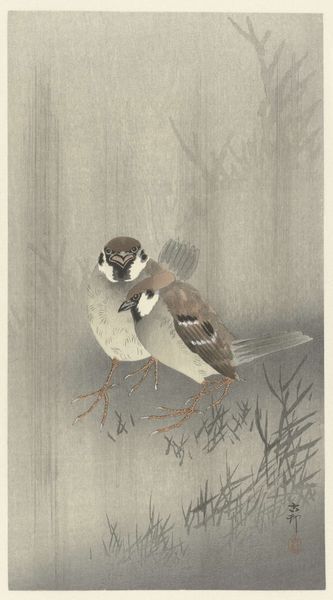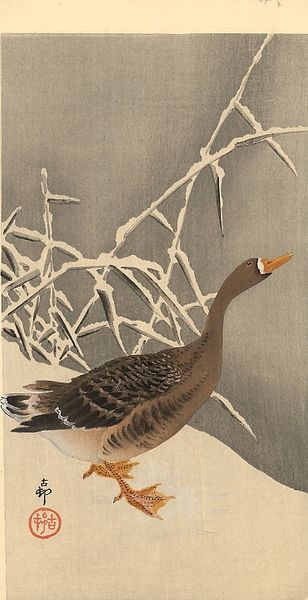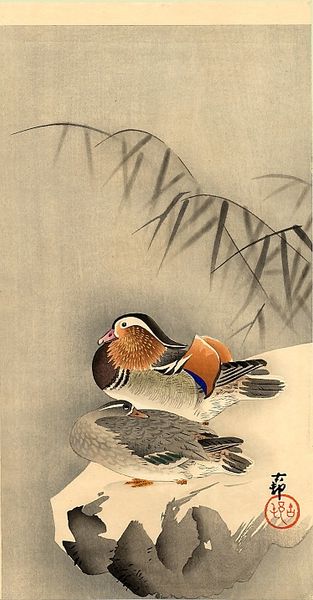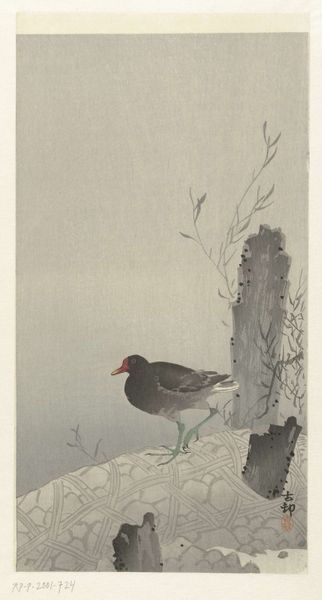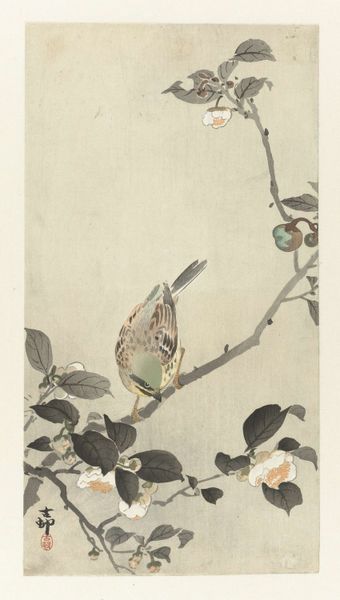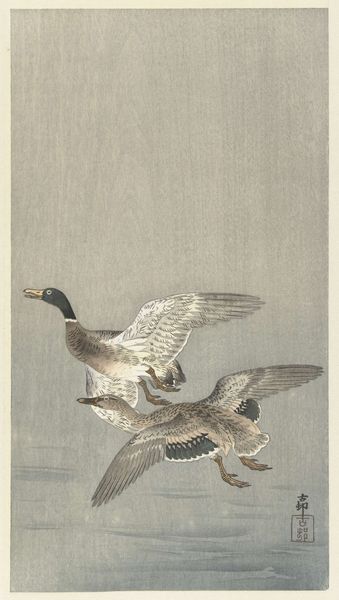
Dimensions: height 347 mm, width 187 mm
Copyright: Rijks Museum: Open Domain
Curator: Looking at this artwork, the overall mood is quiet, reflective... almost melancholy. Editor: Yes, there is a stillness about it. What we have here is a woodblock print titled "Goose by Full Moon," made sometime between 1900 and 1936 by Ohara Koson. Currently, it resides within the Rijksmuseum collection. Curator: A woodblock print... so much labor involved! The subtleties in shading around the goose’s feathers must have required incredibly precise carving and printing. And what about the paper itself? The texture looks crucial to the overall effect. Editor: Absolutely. Considering it's ukiyo-e, or "pictures of the floating world", the image would have been circulating widely. These weren't simply artistic expressions but commodities meant for a public audience, influencing perceptions of nature, leisure, and beauty during that era. How was it displayed or consumed? Was it collected as a form of currency or for something else? It represents this specific genre in woodblock printing during a particular time. Curator: I find myself drawn to the composition: the goose placed slightly off-center, the moon balanced by those thin vertical reeds, there's something inherently imbalanced and, at the same time, satisfying about it. I love those subtle watercolor tones; they're remarkably serene. Editor: The moon itself looms large in East Asian art and culture, often tied to themes of longing, reflection, and cyclical time. The presence of this single goose is evocative – is it part of a flock? Why is it alone? Was the print part of a series that may convey a story or reference historical themes about longing or solitude during specific times? Curator: I appreciate how focusing on the materials—the wood, the paper, the ink—and the intense process involved in creating this print deepens my appreciation. Knowing how this object was made offers a glimpse into the past. Editor: And understanding its social context, its role in the world as both art and a mass-produced commodity, tells us about a particular historical moment and the visual culture it helped shape. Curator: Thanks! Thinking about labor transforms the image. Editor: Agreed; historical insight can also offer clarity.
Comments
No comments
Be the first to comment and join the conversation on the ultimate creative platform.
